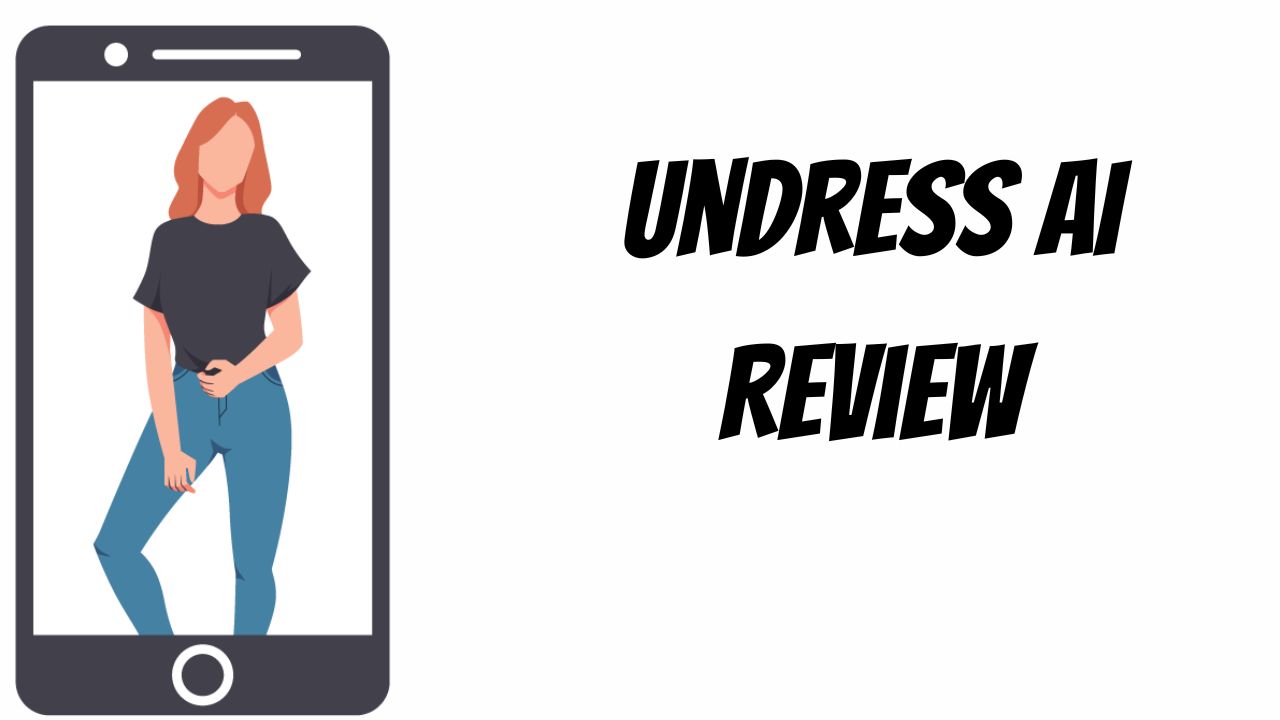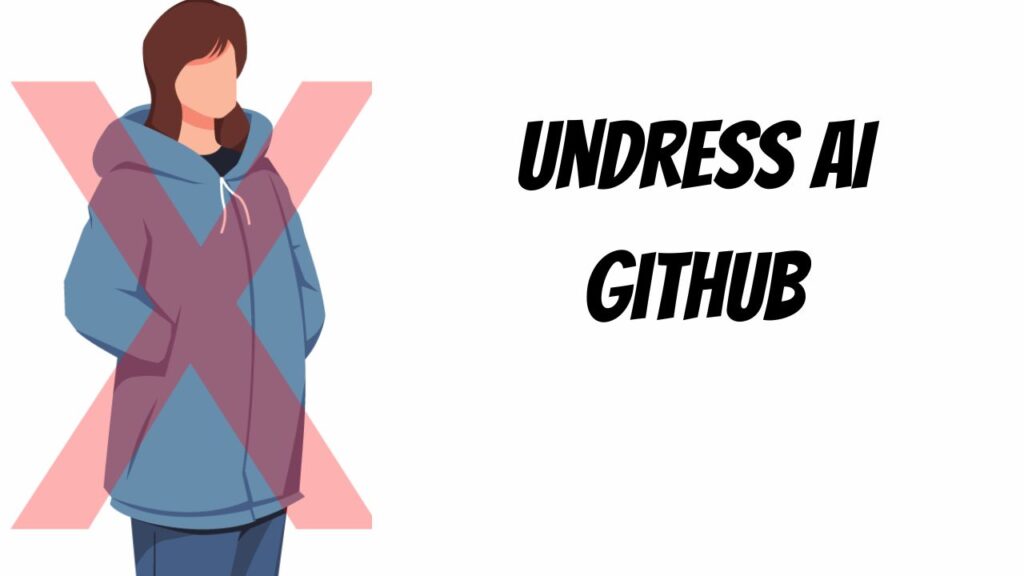Unveiling The Truth About AI Undress: What You Need To Know
Hey there, folks! Let's dive straight into something that's been making waves across the internet world. AI undress technology is a term that’s been buzzing around, and whether you’re intrigued, alarmed, or just plain curious, this article’s got you covered. We’re going to break it down, piece by piece, so you can understand exactly what it means and how it impacts our digital lives. So grab a coffee, sit back, and let’s explore this fascinating yet controversial topic together.
Now, you might be wondering, what exactly is AI undress? In a nutshell, it’s a form of artificial intelligence that uses advanced algorithms to digitally remove clothing from images or videos. It sounds like something out of a sci-fi movie, right? But here’s the thing—it’s real, and it’s raising some serious questions about privacy, ethics, and technology’s role in society. We’re about to deep-dive into the nitty-gritty details, so keep reading!
Before we proceed, let’s set the record straight. This article isn’t here to scare you or spread misinformation. Instead, we aim to provide you with accurate, well-researched information about AI undress. By the time you finish reading, you’ll have a solid understanding of how this tech works, its implications, and what you can do to protect yourself in an increasingly digital world. Let’s get started!
Read also:Sean Parker Vs Mark Zuckerberg The Untold Story Of Facebooks Founding Drama
Here’s a quick overview of what we’ll cover:
- What is AI Undress?
- How Does It Work?
- Ethics and Privacy Concerns
- Legal Implications
- Impact on Society
- How to Protect Yourself
- AI Undress in the Media
- Frequently Asked Questions
- The Future of AI Undress
- Conclusion
What is AI Undress?
Alright, let’s start with the basics. AI undress is essentially a software or algorithm that uses machine learning to analyze images or videos and digitally remove clothing from individuals in those visuals. It’s not magic—it’s science. The technology relies on deep learning models that have been trained on vast datasets of human images to identify patterns, shapes, and contours. Once it understands these elements, it can manipulate the visuals to create altered versions.
Now, here’s the kicker—this tech isn’t just about removing clothes. It’s part of a broader category of AI tools that can edit or generate realistic images, videos, or even audio. While it has some legitimate uses, like in fashion design or medical imaging, its misuse has sparked widespread concern.
Why is AI Undress Controversial?
Let’s face it—when you hear “AI undress,” your mind probably jumps to the darker side of things. And yeah, there’s a reason for that. This tech has been misused to create non-consensual deepfake content, which can harm individuals, especially women, by violating their privacy and dignity. It’s a slippery slope, and that’s why it’s crucial to understand both sides of the coin.
How Does It Work?
So, how does this wizardry actually happen? Well, it’s all about the algorithms. AI undress tools use a combination of convolutional neural networks (CNNs) and generative adversarial networks (GANs). These fancy terms basically mean that the software learns from massive datasets of images to recognize patterns and recreate them in different contexts.
Here’s a simplified breakdown:
Read also:Gunn Funeral Home Little Rock Obituaries A Heartfelt Journey Through Grief And Celebration
- Data Collection: The AI is fed thousands of images of people in various poses and outfits.
- Pattern Recognition: It analyzes these images to understand how clothing interacts with the human body.
- Image Manipulation: Using GANs, the AI generates new visuals where the clothing is digitally removed, often with surprising accuracy.
It’s wild, right? But as with any powerful tool, the way it’s used makes all the difference.
Is It Accurate?
Accuracy depends on the quality of the dataset and the sophistication of the algorithm. Some tools are incredibly advanced and produce realistic results, while others might look a bit off. However, even a slightly inaccurate result can still cause harm if used maliciously.
Ethics and Privacy Concerns
Now, let’s talk about the elephant in the room. The ethical and privacy implications of AI undress are massive. Imagine someone taking your photo without your consent and then using AI to alter it in ways that could damage your reputation or invade your privacy. It’s a scary thought, and unfortunately, it’s already happening.
Here are some key concerns:
- Consent: People should have control over how their images are used, but AI undress often disregards this basic right.
- Harassment: This tech can be weaponized to harass or blackmail individuals, particularly women.
- Trust: As AI-generated content becomes more common, it becomes harder to trust what we see online.
What Can Be Done?
There are ongoing efforts to regulate and mitigate the misuse of AI undress. Tech companies are developing detection tools to identify deepfakes, and lawmakers are considering new legislation to protect individuals. But it’s a race against time, and we all need to stay informed.
Legal Implications
Legally speaking, AI undress sits in a gray area. While some countries have laws against non-consensual pornography, others lag behind in addressing the specific challenges posed by AI-generated content. It’s a complex issue because the technology itself isn’t inherently bad—it’s how it’s used that matters.
In the U.S., for example, some states have passed laws to criminalize the creation and distribution of deepfake pornography. However, enforcement remains a challenge, especially when the content is created or distributed across borders.
International Perspective
Globally, there’s a push for more comprehensive regulations. Organizations like the European Union are exploring ways to balance innovation with privacy protection. It’s a delicate balancing act, but one that’s crucial for the future of digital ethics.
Impact on Society
AI undress isn’t just about individual privacy—it affects society as a whole. Trust in media is eroding, and the lines between reality and fiction are becoming increasingly blurred. This can have far-reaching consequences, from influencing public opinion to undermining democratic processes.
For instance, imagine a scenario where AI-generated content is used to spread misinformation during an election. The potential for harm is immense, and it’s something we need to address collectively.
Education and Awareness
Raising awareness is one of the most effective ways to combat the negative impacts of AI undress. By educating people about the risks and teaching them how to spot deepfakes, we can empower individuals to protect themselves and others.
How to Protect Yourself
So, what can you do to stay safe in this digital age? Here are a few tips:
- Be Cautious with Photos: Think twice before sharing personal images online.
- Use Strong Privacy Settings: Limit who can see your photos on social media platforms.
- Report Misuse: If you encounter AI-generated content that violates someone’s privacy, report it to the platform or authorities.
Remember, prevention is key. The more proactive you are, the better protected you’ll be.
Tools to Detect Deepfakes
There are several tools available that can help you detect AI-generated content. These tools analyze images and videos for signs of manipulation, such as inconsistencies in lighting or facial features. While they’re not foolproof, they’re a great starting point for staying vigilant.
AI Undress in the Media
The media plays a crucial role in shaping public perception of AI undress. Some outlets focus on the dangers, while others highlight potential positive applications. It’s important to approach these stories with a critical eye and seek out multiple perspectives.
For example, a recent article in The Guardian explored the rise of AI undress and its implications for privacy. Meanwhile, Forbes discussed the potential uses of AI in fashion design. Both angles are valid, and understanding both sides gives you a more complete picture.
Media Responsibility
Journalists and content creators have a responsibility to report accurately and responsibly. Sensationalizing the topic can lead to unnecessary panic, while downplaying the risks can leave people unprepared. Striking the right balance is essential.
Frequently Asked Questions
Let’s tackle some common questions about AI undress:
- Is AI undress legal? It depends on the jurisdiction and how it’s used. Some applications may be legal, while others could violate privacy laws.
- Can it be stopped? Completely stopping AI undress is unlikely, but regulating its use and raising awareness can help mitigate its negative impacts.
- What’s the future of this tech? As AI continues to evolve, so too will its capabilities. The key is to ensure ethical guidelines are in place to guide its development.
The Future of AI Undress
Looking ahead, the future of AI undress is uncertain but inevitable. Advances in technology will make it even more sophisticated, which means we need to stay ahead of the curve. Collaboration between tech companies, policymakers, and the public will be essential in shaping a future where innovation and ethics go hand in hand.
Predictions
Experts predict that AI-generated content will become even harder to detect, making it crucial to invest in detection tools and public education. Additionally, new regulations may emerge to address the unique challenges posed by this technology.
Conclusion
And there you have it—a comprehensive look at AI undress. From its inner workings to its ethical implications, we’ve covered a lot of ground. The key takeaway is this: AI undress is a powerful tool that can be used for good or ill. It’s up to us as a society to ensure it’s used responsibly.
So, what can you do? Stay informed, stay vigilant, and most importantly, stay proactive. If you’ve learned something new today, share this article with others. Together, we can foster a safer, more ethical digital world.
Got thoughts or questions? Drop a comment below and let’s chat. And hey, don’t forget to check out our other articles for more insights into the world of AI and beyond. Thanks for reading!


